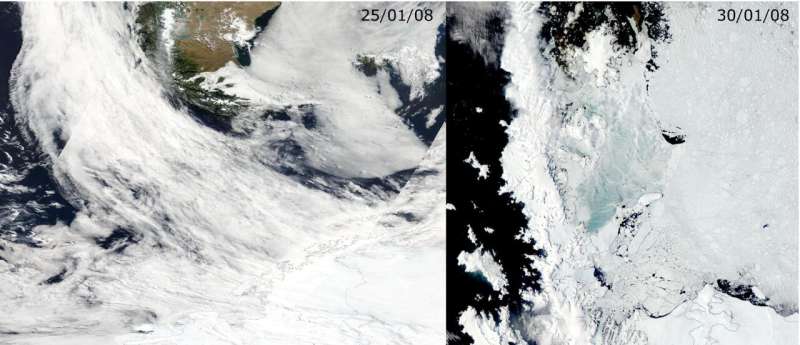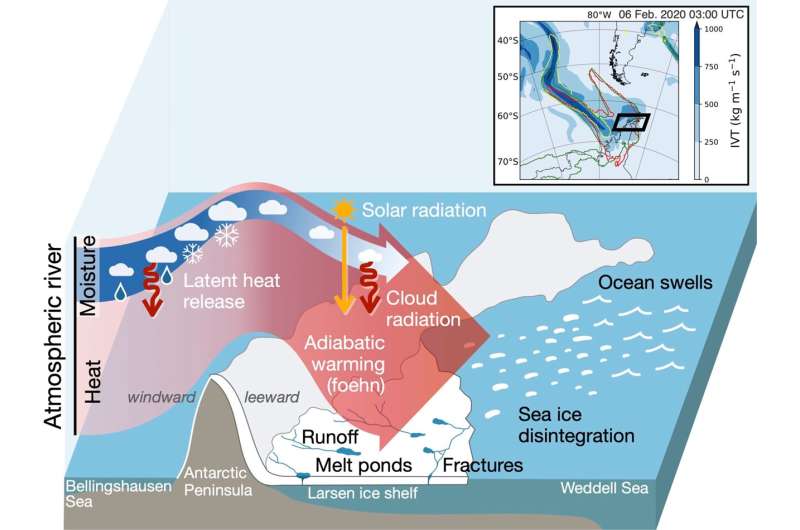Study suggests Larsen A and B ice shelves collapsed due to atmospheric rivers

A team of researchers affiliated with multiple institutions across Europe has found evidence that suggests the collapse of the Larsen A and B ice shelves was due to the arrival of atmospheric rivers. In their paper published in the journal Communications Earth and Environment, the group describes how they tracked the movement of atmospheric rivers during the time period when the ice shelves collapsed and what their work reveals about likely scenarios unfolding in Antarctica as global warming continues.
Ice shelves form when ice from glaciers meet the sea, and instead of breaking, they float on top of the ocean. Prior research has suggested that as global warming continues, ice shelves have begun to breakup. And while such breakups do not contribute to a rise in ocean levels, their loss does allow the glaciers that spawned them to flow unimpeded into the sea, which does raise sea levels. Prior research has also shown that one of the major reasons for ice shelf break up is the flow of warmer water beneath them. In this new effort, the researchers have found that atmospheric rivers are also very likely a contributing factor.
Atmospheric rivers, as their name suggests, are currents of air that have different properties than the air around them. In most cases, they are warmer and thus carry more moisture. To learn more about the possible impact of atmospheric rivers when they flow into the Antarctic region, the researchers used a variety of tools, including a computer algorithm developed specifically to detect atmospheric rivers, and climate models and imagery captured by satellites. By identifying and following the paths of atmospheric rivers as they arrived at Antarctica, they found that one arrived in 1995 just before the collapse of Larsen A, and another arrived in 2002 just before the collapse of Larsen B.

Further study of the two events showed that the warm moist air from the atmospheric rivers led to melting of the surface ice, which seeped into cracks and refroze, widening the cracks. That led both of the shelves to be exposed to ocean swells that tore them apart. They also found that atmospheric rivers played a role in triggering 13 of 21 iceberg calving events between 2000 and 2020.Researchers identify biggest threats to Larsen C ice shelf
More information: Jonathan D. Wille et al, Intense atmospheric rivers can weaken ice shelf stability at the Antarctic Peninsula, Communications Earth & Environment (2022). DOI: 10.1038/s43247-022-00422-9
Journal information: Communications Earth & Environment
© 2022 Science X Network
No comments:
Post a Comment